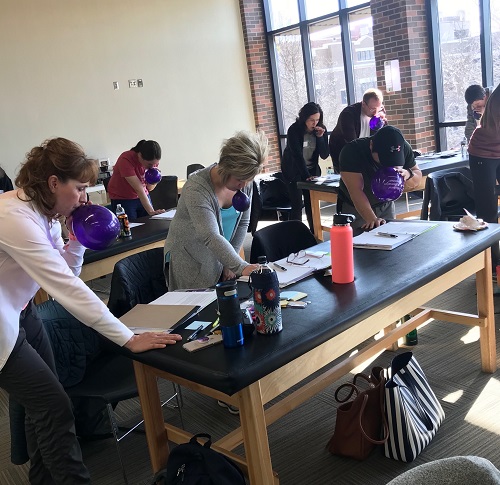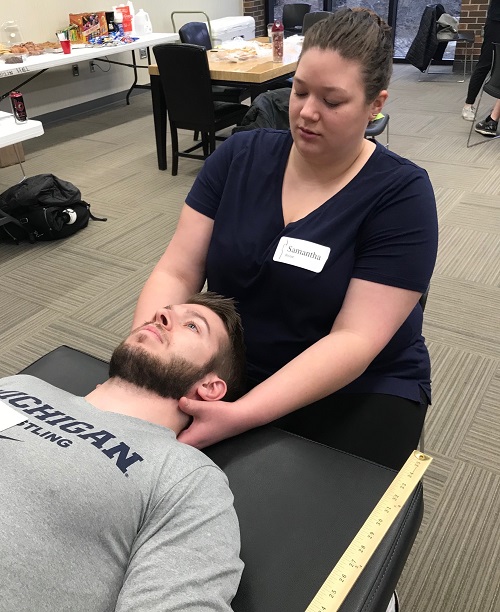“Lots of evidence-based practice.”
“I plan to integrate the information immediately into my practice.”
Thank you to Heather Golly, ATC, PhD, Beth Marschner, DPT, and Dawn Mattern, MD, faculty at Minot State University, in Minot, North Dakota, for hosting Postural Respiration this past weekend. We were able to sneak this course in before the travel and conference bans were enacted and had plenty of hand-sanitizer at our disposal!

MSU was the host site for Myokinematics last year, so most attendees had that course under their belt. It served as a springboard to understanding how the top half of the body, the thorax, influences and is influenced by the lower half.
Our ability to fully and properly compress and decompress our bodies – the thorax, abdominal, pelvic, and cranial chambers — in the space around us is dictated by air flow patterns provided by hemi-diaphragms that are in position to do so. This is compromised if abdominals, which wrap around the lower ribs and shape the hemi-diaphragms within to preserve their length-tension properties, aren’t sensed and facilitated. Therefore, training the abdominals first and foremost for respiration, not core stability, is imperative. All our movements and physiology, from HRV, digestion, and the ability to concentrate, depend on this.


One attendee grappled with when to consider prone “I’s”, “Y’s”, and “T’s” in their program. This led to a helpful discussion, and paradigm shift, on the need to first address thoraco-scapular mechanics, as achieved by diaphragm position, rib cage expansion, and alterations of air flow patterns, before introducing scapula on thorax activity. Without proper respiratory mechanics in place, muscles of the scapula acting on the thorax are simply out of position and lack meaningful leverage to provide safe, effective cervical and upper extremity joint performance.

Everyone appreciated and learned from those who stepped up to demonstrate non-manual techniques and to act as patient models for lab: Stephanie Boespflug, PTA, PRC (my fellow PRC 2011 alum), Beth Marschner, Kirk Mason, DC, Terry Quijano, ATC student, Rebekah Rye, ATC, and Shane Williams, ATC student. They enhanced and clarified how we define R BC/L AIC patterned activity and how we differentiate this presentation and its treatment considerations from that of superior T4 and B PEC compensations. Thank you also to Kari Harris, DPT, and Heidi Folk, PT, for adding to the discussion with insightful questions and personal clinical examples. I appreciated everyone’s warmth and hospitality, North Dakota-style. Thank you all for a wonderful weekend. The Institute looks forward to bringing more courses to your neck of the woods!


